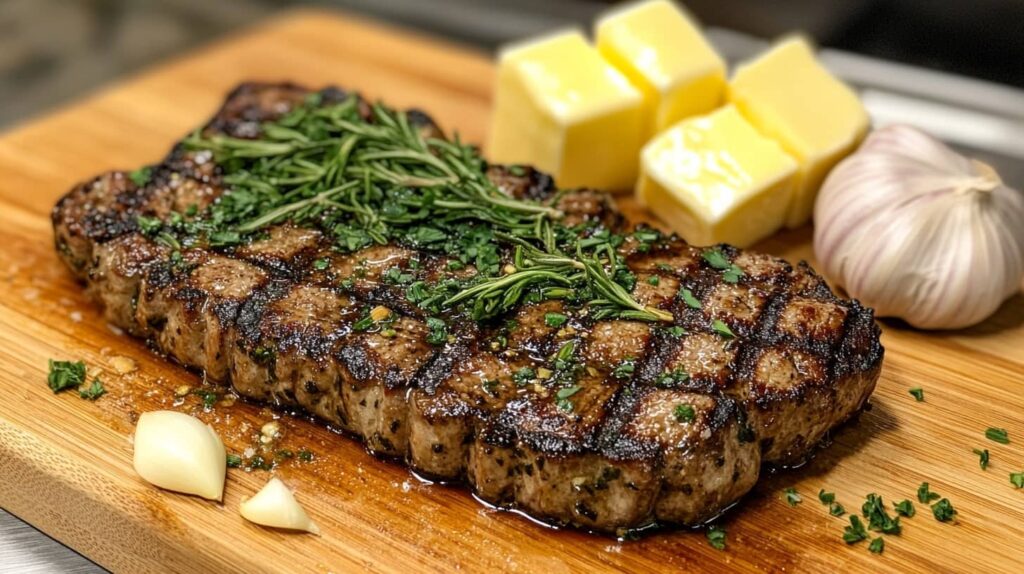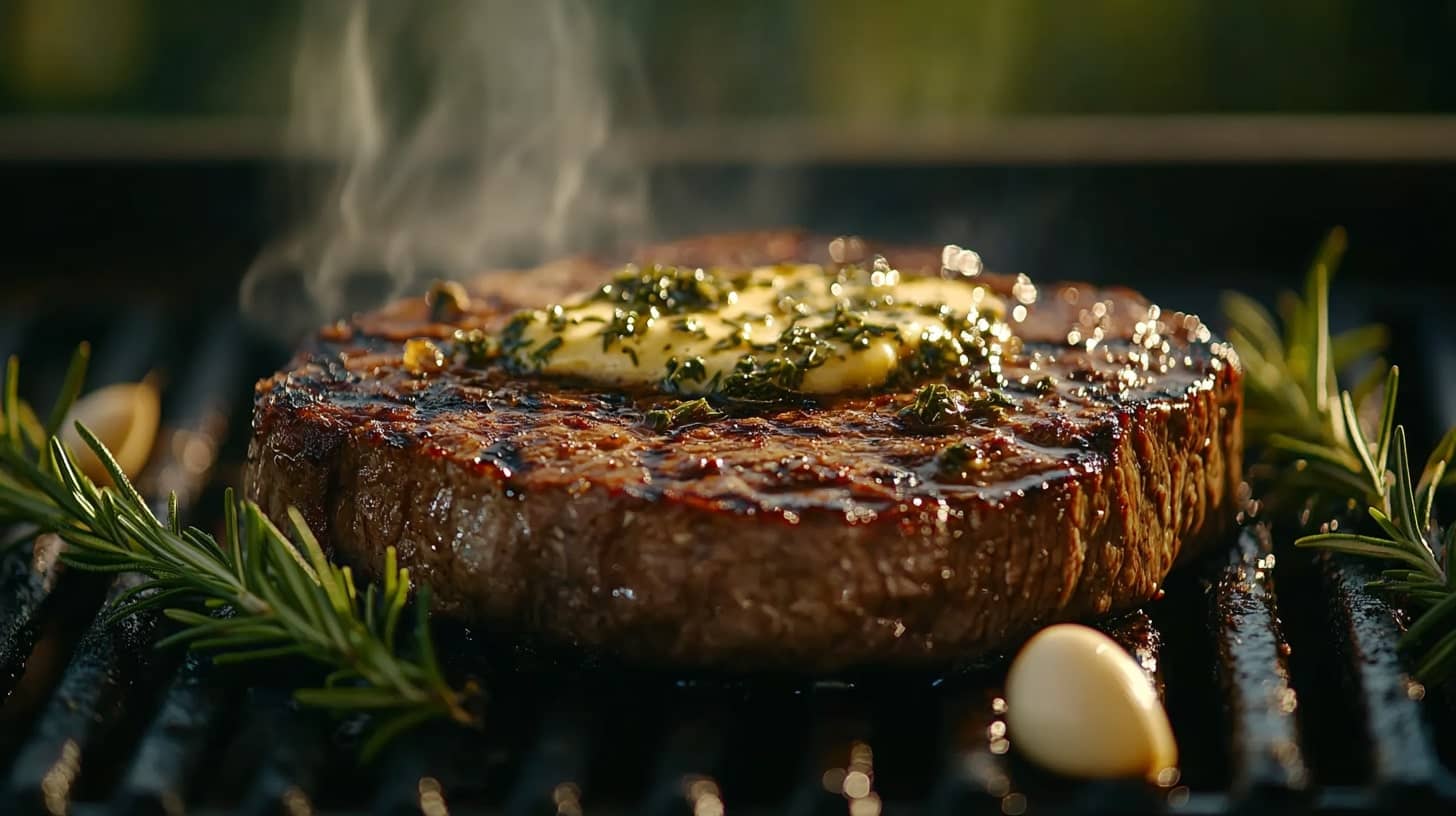Table of Contents
Is a Delmonico Steak Really the Same as a Ribeye? If you’ve ever found yourself staring at a menu, debating between a Delmonico steak and a ribeye, you’re not alone. These two cuts of meat often create confusion, especially for steak lovers who aren’t butchery experts. So, are they really the same? Let’s dig into the juicy details and put this debate to rest.
The Origin and History of Delmonico Steak
The Legacy of Delmonico’s Restaurant
The Delmonico steak owes its fame to Delmonico’s, a historic restaurant in New York City that opened in the early 19th century. Known for its luxurious dining experience, Delmonico’s served one of the first true American steaks. But here’s the kicker: the exact cut of the Delmonico steak wasn’t fixed. It varied based on what the butcher deemed as the finest cut of the day.
“A Delmonico steak isn’t just a cut; it’s a tradition steeped in culinary history.”
The Evolution of the Delmonico Steak Over Time
Over time, the term “Delmonico steak” became synonymous with high-quality beef. However, its exact definition remains a mystery. Depending on the region and butcher, it could refer to a ribeye, strip steak, or even a top loin cut. The ambiguity adds a touch of intrigue, doesn’t it?
What Defines a Ribeye Steak?
Ribeye’s Place in Culinary Tradition
Ribeye, as the name suggests, is cut from the rib section of the cow. This cut is celebrated for its marbling—those white streaks of fat that melt into the meat during cooking, creating a buttery texture and flavor explosion. It’s the steak that’s often the star of backyard BBQs and fine dining alike.
Characteristics of Ribeye: Flavor and Texture
One bite of a ribeye, and you’ll understand why it’s such a crowd-pleaser. The rich marbling gives it a bold, beefy flavor that’s hard to beat. Its tender texture makes it perfect for grilling, pan-searing, or even slow roasting. 🍔
Comparing Delmonico Steak and Ribeye
Key Differences in Cuts of Meat
Here’s where things get interesting. While ribeye is a specific cut, the Delmonico steak can vary. Some butchers use the term for cuts like ribeye, while others may label a boneless top loin steak as Delmonico. It’s like calling every soda “Coke”—the name sticks, but the contents might differ.
Flavor Profiles: How Do They Compare?
If you’re chasing bold, beefy flavors, ribeye wins every time thanks to its marbling. Delmonico steaks, depending on the cut, can range from mildly tender to exceptionally juicy, but they lack the consistent fattiness that defines a ribeye.
Cooking Techniques for Each Steak
Ribeyes shine on the grill—that charred exterior paired with a juicy interior is a match made in heaven. Delmonico steaks, on the other hand, are versatile and can be cooked in a variety of ways, from grilling to broiling or even pan-searing.
Common Misconceptions About Delmonico Steak
Why People Confuse Delmonico with Ribeye
Let’s clear the air: not all Delmonico steaks are ribeyes. This confusion stems from the historical lack of a standardized definition for Delmonico steak. Some regions even market it as ribeye to appeal to steak enthusiasts.
Clarifying the Misinformation
The easiest way to distinguish the two? Ask your butcher or server about the cut’s origin. If it’s from the rib section, it’s likely a ribeye. Anything else, and you’re probably dealing with a Delmonico.

Tips for Choosing the Right Steak
Factors to Consider: Occasion, Flavor, and Budget
If you’re grilling for a crowd, ribeye’s consistent flavor makes it a safe bet. For a more refined dinner, a Delmonico steak can add an element of surprise and sophistication. Plus, it’s often more budget-friendly.
How to Recognize Authentic Cuts
Check the marbling and ask questions! Ribeyes will always have that signature fat distribution, while Delmonico steaks may have leaner, more uniform textures depending on the cut.
Popular Recipes for Delmonico Steak
Traditional Pan-Seared Delmonico
Want to cook a Delmonico steak at home? Here’s a quick recipe:
| Ingredient | Quantity |
|---|---|
| Delmonico steak | 1 (12 oz) |
| Salt and pepper | To taste |
| Butter | 2 tbsp |
| Garlic cloves (crushed) | 2 |
| Fresh rosemary | 1 sprig |
Instructions:
- Season the steak generously with salt and pepper.
- Heat a skillet over medium-high heat and add butter.
- Sear the steak for 3-4 minutes on each side.
- Add garlic and rosemary to the skillet, spooning the butter over the steak.
- Remove the steak and let it rest for 5 minutes before serving.
Delmonico with Herb Butter
Pairing your steak with herb butter takes it to the next level. Simply mix softened butter with chopped parsley, garlic, and a squeeze of lemon, then dollop it onto the hot steak. 🍽️
Popular Recipes for Ribeye
Classic Grilled Ribeye
Here’s how to grill a ribeye like a pro:
| Ingredient | Quantity |
|---|---|
| Ribeye steak | 1 (14 oz) |
| Olive oil | 1 tbsp |
| Salt and pepper | To taste |
Instructions:
- Rub the steak with olive oil, salt, and pepper.
- Preheat your grill to medium-high heat.
- Cook the steak for 4-5 minutes on each side for medium-rare.
- Let it rest for 5 minutes before serving.
Ribeye with Chimichurri
Drizzle a tangy chimichurri sauce made from parsley, garlic, olive oil, and vinegar over your ribeye for a fresh, zesty kick.
Common Problems and Solutions in Cooking Steaks
How to Avoid Overcooking
One of the biggest mistakes home cooks make is overcooking their steak. To avoid this, use a meat thermometer to check the internal temperature. For medium-rare, aim for 130-135°F. And remember, the steak will continue to cook slightly as it rests.
Dealing with Tough or Dry Steaks
If your steak turns out tough, it’s likely due to overcooking or starting with a cut that wasn’t well-marbled. A quick fix? Slice it thinly against the grain to break up the muscle fibers, or serve it with a flavorful sauce to add moisture.
Expert Tips for Cooking Perfect Steaks
Mastering the Sear
A golden-brown crust isn’t just for looks—it adds flavor. To achieve this, make sure your pan or grill is hot before adding the steak. Pat the meat dry to remove surface moisture, and resist the urge to move it around too much while cooking.
Resting and Slicing for Maximum Juiciness
After cooking, let your steak rest for at least 5-10 minutes. This allows the juices to redistribute, ensuring every bite is tender and juicy. When slicing, always cut against the grain for optimal texture.
The Debate: Delmonico Steak vs. Ribeye – Which Is Better?
Opinions from Chefs and Food Enthusiasts
Some chefs swear by the ribeye for its consistent flavor, while others love the mystery and versatility of the Delmonico. Ultimately, the choice boils down to your personal preference.
Why Your Choice May Depend on Personal Preference
If you love rich, fatty flavors, go for the ribeye. If you’re in the mood to explore and try something unique, a Delmonico steak might surprise you. Either way, you’re in for a treat!
Last Bite
At the end of the day, whether you choose a Delmonico or a ribeye, you’re indulging in one of life’s greatest culinary pleasures. Both steaks have their own unique charm, and there’s no wrong choice—just delicious possibilities. So, fire up the grill or heat up your skillet and enjoy every bite!
People also ask
Is Delmonico a good cut of steak?
Yes, a Delmonico steak is considered a good cut of steak, but its quality depends on the specific cut used, as the term “Delmonico” isn’t standardized. Traditionally, it refers to a high-quality steak served at Delmonico’s restaurant, often selected for its tenderness and flavor. Depending on the butcher, it may be a ribeye, strip steak, or even a boneless top loin, all of which are prized cuts. When prepared properly, a Delmonico steak can deliver a luxurious and satisfying dining experience.
What is another name for Delmonico steak?
Another name for Delmonico steak can vary depending on the region and butcher, but it is often associated with the ribeye or boneless rib steak. In some cases, it might refer to a top loin steak or strip steak. This variation adds to the mystery of the Delmonico steak, making it essential to clarify the cut when purchasing or ordering it.
What is a poor man’s Delmonico?
The “poor man’s Delmonico” refers to the chuck eye steak, which comes from the same primal section as the ribeye but is more affordable. While it doesn’t have the same marbling as a ribeye or Delmonico steak, it still offers great flavor and tenderness when cooked properly. This cut is popular for those looking for a budget-friendly alternative to premium steaks.
What steak is the same as ribeye?
Is a Delmonico Steak Really the Same as a Ribeye? The steak most commonly considered the same as ribeye is the Scotch fillet, a term often used outside the United States, particularly in Australia and New Zealand. In essence, the ribeye is a specific cut from the rib section of the cow and is universally recognized for its marbling and rich flavor. However, its naming conventions may differ based on regional terminology.

